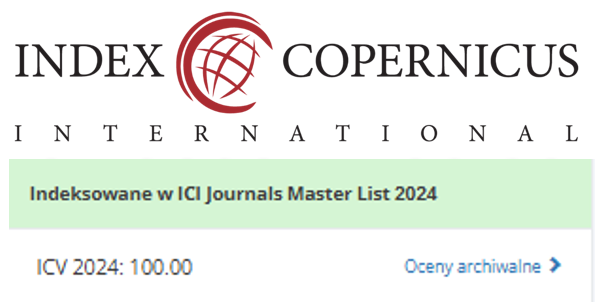Behavior Disorders in Early Childhood and Maternal Anemia History: A Cross-Sectional Study in Indonesia
DOI:
https://doi.org/10.55018/janh.v7i3.342Keywords:
Anemia, Behavior Disorder, Early ChildhoodAbstract
Background: Anemia is a health condition caused by genetic factors, infectious disorders, and the environment. Lead exposure increased the risk of anemia, with several sources including cigarette smoke, motor vehicle exhaust, pesticide residues, and contamination from synthetic textile dyes. Mothers with anemia frequently give birth to children who also experience the same condition, thereby disrupting growth and development and causing behavioral disorders. Therefore, this study aimed to examine the relationship between maternal anemia and behavioral disorders in early childhood in areas with high lead exposure.
Methods: A cross-sectional analysis was conducted, and samples were selected using purposive non-random sampling. This study included 16 early childhood education (PAUD) students, 16 parents, and 4 PAUD teachers. Data analysis included descriptive and correlational analyses using SPSS 23.
Results: The results showed a correlation between maternal hemoglobin levels and emotional and behavioral disorder scores (-0.508, p < 0.05), as well as autism risk detection (-0.610, p < 0.05). There was also a correlation between the pre-screening child development questionnaire and autism risk detection scores (-0.525, p <0.05)..
Conclusion: Mothers with anemia tend to give birth to children who also develop the same condition. The condition disrupts growth and development in children, contributing to behavior disorders.
Downloads
References
Akca, S. O., & Bostanci, M. Ö. (2017). The impact of anemia and body mass index (BMI) on neuromotor development of preschool children. Revista da Associação Médica Brasileira, 63(9), 779–786. https://doi.org/10.1590/1806-9282.63.09.779.
Ardiansyah., Roslita, R., Hamid, A., Utami, A., Wisanti, E. (2023). Durasi Penggunaan Gadget Terhadap Masalah Perkembangan Perilaku Emosional Anak Usia Pra Sekolah. Jurnal Penelitian Perawat Profesional, Vol 5 No 1 Februari 2023 193-202
Bagaswoto, H. P., Sutaryo, & Nugroho, S. (2015). Korelasi Kadar Timbal dalam Darah dengan Kadar Hemoglobin pada Anak Usia 1–6 Tahun. Sari Pediatri, 17(4), 297–301. https://doi.org/10.14238/sp17.4.2015.297-301
Chowdhury, M. R. K., Khan, M. M. H., Khan, H. T. A., Rahman, M. S., Islam, M. R., Islam, M. M., & Billah, B. (2020). Prevalence and risk factors of childhood anemia in Nepal: A multilevel analysis. PLoS ONE, 15(10), e0239409. https://doi.org/10.1371/journal.pone.0239409
Dewi, N., Susilowati, I. T., Lukitasari, E. H., Anwar, A. K., Ramadhani, D., Aribowo, P., Indrastuti, N. S., Puspitaningrum, N. E., Hidayah, L. N., Aristawati, D. M., Adhe, S., & Saputra, A. P. (2024). Edukasi pemanfaatan minyak jelantah dan daun kelor logam berat dari pewarna sintetis dan pestisida di Desa Tlingsing, Cawas, Klaten. Jurnal Pengabdian Teknologi Tepat Guna, 5(3), 227–238. https://doi.org/10.5555/jpttg.2024.227.
Gebreegziabiher, G., Etana, B., & Niggusie, D. (2015). Determinants of anemia among children aged 6–59 months living in Kilte Awulaelo Woreda, Northern Ethiopia. Anemia, 2014, 245870. https://doi.org/10.1155/2014/245870.
Harini, S. (2024). Canonical correlation analysis of lead concentration in hair impacted with IQ, antisocial behavior, and hand strength at high school students community. Journal of Multidisciplinary Applied Natural Science, 5(1), 175–183. https://doi.org/10.47352/jmans.v5i1.1234.
Hegazy, A. A., Zaher, M. M., Abd El-Hafez, M. A., Morsy, A. A., & Saleh, R. A. (2010). Relation between anemia and blood levels of lead, copper, zinc and iron among children. BMC Research Notes, 3, 133. https://doi.org/10.1186/1756-0500-3-133
Iftikhar, A. (2018). Maternal anemia and its impact on nutritional status of children under the age of two years. Biomedical Journal of Scientific & Technical Research, 5(3), 4519–4522. https://doi.org/10.26717/BJSTR.2018.05.001258.
Irsa, L. (2016). Gangguan kognitif pada anemia defisiensi besi. Sari Pediatri, 4(3), 114.
Loreto Santa Marina, Nerea Lertxundi, Ainara Andiarena, Amaia Irizar, Jordi Sunyer, Amaia Molinuevo, Sabrina Llop, Jordi Julvez, Andrea Beneito, Jesus Ibarluzea, Liher Imaz, Maite Ferrin. (2020). Maternal ferritin levels during pregnancy and ADHD symptoms in 4-year-old children: Prospective birth cohort study. International Journal of Environmental Research and Public Health, 17(7704), 1–12. https://doi.org/10.3390/ijerph17217704
Martinez-Torres, V., Torres, N., Davis, J. A., & Corrales-Medina, F. F. (2023). Anemia and associated risk factors in pediatric patients. Pediatric Health, Medicine and Therapeutics, 14, 267–280. https://doi.org/10.2147/PHMT.S389105
Muna, N.R., Jatnika, R., Purwono, U., Siregar, J.R. (2023). Pelatihan Optimalisasi Selective Attention Pada Anak dengan Gangguan Pemusatan Perhatian dan Hiperaktivitas Usia 8-9 Tahun. Dharmakarya: Jurnal Aplikasi Ipteks untuk Masyarakat, Vol. 12, No. 1, Maret 2023 20 – 30
Mu-Hong Chen, Tung-Ping Su, Ying-Sheue Chen, Ju-Wei Hsu, Kai-Lin Huang, Wen-Han Chang, Tzeng-Ji Chen and Ya-Mei Bai. (2013). Association between psychiatric disorder and iron deficiency anemia among children and adolescents: A nationwide population-based study. BMC Psychiatry, 13, 161. https://doi.org/10.1186/1471-244X-13-161.
Ntenda, P. A. M., Nkoka, O., Bass, P., & Senghore, T. (2018). Maternal anemia is a potential risk factor for anemia in children aged 6–59 months in Southern Africa: A multilevel analysis. BMC Public Health, 18(1), 1–13. https://doi.org/10.1186/s12889-018-5477-9.
Nuraeny, H., Hoedaya, A.P., Ningrum, D., Haryeti, P. (2023). Gambaran Perkembangan Anak Usia 2-4 Tahun dengan Ketergantungan Gadget. Jurnal Penelitian Perawat Profesional Vol 5 No 3 Agustus 2023 1299-1308
Priliani, L., Harahap, A. R., Satyagraha, A. W., Noviyanti, R., Apriyana, I., Nanine, I., Sudoyo, H., & Malik, S. G. (2025). Mapping anemia prevalence across Indonesia. Asia Pacific Journal of Clinical Nutrition, 34(3), 430–439. https://doi.org/10.6133/apjcn.202506_34(3).0017.
Purwati, & Wimpy. (2023). Mengenal bahaya pestisida. In T. Harningsih & N. Dewi (Eds.), Penanganan penyakit degeneratif (pp. 13–20). CV Global Aksara Pers. ISBN 978-623-462-302-4.
Risca Fauzia, F., Wahyuntari, E., & Wahtini, S. (2021). Relationship between maternal anemia and the incidence of anemia in infants aged 6–36 months. Jurnal Kebidanan Midwiferia, 7(2), 93–102. https://doi.org/10.21070/jkm.v7i2.882.
Rosdianah, A. K., Mukarram, Y. I., & Khadiamsi, A. A. (2023). Perbandingan kejadian anemia pada ibu hamil yang terpapar dan tidak terpapar asap rokok di Desa Taeng Kabupaten Gowa. Alami (Alauddin Islamic Medical) Journal, 7(1), 1–8. https://doi.org/10.24252/alami.v7i1.37954
Salim, H., Soetjiningsih., Windiani, I.G.A.T. (2020). Validation of The Indonesian Version of Modified Checklist for Autism in Toddlers: a diagnostic study, Paediatrica Indonesiana Vol 6 No 3 May 2020 160-166
Setiyaningsih, A., Widyaning, H., Wijayanti, T., & Ningsih, M. S. (2023). Hubungan kadar hemoglobin ibu hamil dengan kejadian stunting pada balita di Puskesmas Ngemplak. Jurnal Komunikasi Kesehatan, 14(1), 26–36
Shukla, A. K., Srivastava, S., & Verma, G. (2019). Effect of maternal anemia on the status of iron stores in infants: A cohort study. Journal of Family & Community Medicine, 26(2), 118–122. https://doi.org/10.4103/jfcm.JFCM_72_18.
Suriadi, R., Mustika, P. P., Wielim, E., Cynthia, & Suryawan, I. W. B. (2025). Analisis faktor-faktor risiko anemia pada anak di Rumah Sakit Umum Daerah Wangaya Bali. Sari Pediatri, 27(1), 32–37. https://doi.org/10.14238/sp27.1.2025.32-7
Susanti, D. F., Sunartini, H., & Sutomo, R. (2015). Hubungan antara defisiensi besi dengan attention deficit/hyperactivity disorder pada anak. Sari Pediatri, 17(1), 29–34. https://doi.org/10.14238/sp17.1.2015.29-34
Susilowati, I. T., Dewi, N., & Saroh, D. (2025). The neurotoxic impact of lead on the appearance of antisocial behavior in batik dye workers. Jurnal Kesehatan Masyarakat, 20(3), xx–xx
Susilowati, I. T., Dewi, N., Trikusumaadi, S. N., & Saputri, D. (2022). The impact of exposure to blood lead levels on online ojek driver students on intelligence and communication anxiety. Indonesian Journal of Global Health Research, 4(2), 309–314. https://doi.org/10.37287/ijghr.v4i2.422.
Susilowati, I. T., Harningsih, T., Purwati, Saroh, D., & Dewi, N. (2025). Bahaya paparan timbal bagi kesehatan dan gangguan perilaku. Surabaya: CV Global Aksara Pers. ISBN 978-623-462-788-6
Tarigan, M & Fadillah. (2021). Uji Validasi Konstruk Tes Weschler Intelligence Scale for Children (WISC). Jurnal Studi Insania, November 2021 168-186
Wiegersma, A. M., Dalman, C., Lee, B. K., Karlsson, H., & Gardner, R. M. (2019). Association of prenatal maternal anemia with neurodevelopmental disorders. JAMA Psychiatry, 76(12), 1294–1304. https://doi.org/10.1001/jamapsychiatry.2019.2309.
Zulaekah, S., Purwanto, S., & Hidayati, L. (2014). Anemia terhadap pertumbuhan dan perkembangan anak malnutrisi. Jurnal Kesehatan Masyarakat, 9(2), 106–114. https://doi.org/10.12928/kesmas.v9i2.1152.
Downloads
Published
How to Cite
Issue
Section
License
Copyright (c) 2025 Noviana Dewi, Almas Awanis, Sevy Astriyana, Anniez Rachmawati Musslifah

This work is licensed under a Creative Commons Attribution-ShareAlike 4.0 International License.


















